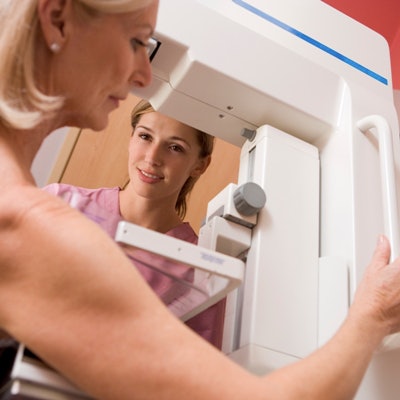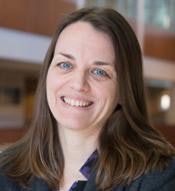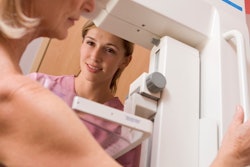
Some women's health researchers are coming around to the idea of breast screening tailored to a woman's risk of breast cancer. A new study published August 23 in the Annals of Internal Medicine offers support for the idea, but also goes a step further, calling for screening every three years for women at lowest risk of cancer.
It might sound like a radical idea, but such an interval offers the best balance of harms and benefits for women with a low risk of breast cancer, wrote a group of researchers from the Cancer Intervention and Surveillance Modeling Network. Such tailored screening protocols are better than using a one-size-fits-all approach to screening, they believe (Ann Intern Med, August 23, 2016).
"The frequency of mammography screening should be determined more by a woman's breast cancer risk profile than by her age," co-lead author Amy Trentham-Dietz, PhD, from the University of Wisconsin-Madison, told AuntMinnie.com. "Our goal in this study is to help provide evidence women and their providers can discuss as they weigh the benefits and harms of screening."
But critical reaction to the study and its methods has been swift. Relying on modeling to determine screening frequency is dangerous, said Dr. Debra Monticciolo, chair of the American College of Radiology's breast imaging commission.
"What these researchers are proposing using these models has not been validated clinically at all," she said. "In fact, one of the models they chose, Model W, assumes that a percentage of invasive cancers will melt away on their own. This just doesn't occur in reality."
Clear consensus?
In 2009, the U.S. Preventive Services Task Force (USPSTF) updated its breast cancer screening recommendations to state that women should begin biennial mammography screening at age 50. That move sparked a shift in screening recommendations by a number of physician groups, from 40 as a starting age toward 50 as the time to begin screening (although the American College of Radiology still recommends that women start at 40). Groups are also moving from advising annual screening to recommending that screening happen every two years.
 Amy Trentham-Dietz, PhD, from the University of Wisconsin-Madison.
Amy Trentham-Dietz, PhD, from the University of Wisconsin-Madison."Debate surrounding breast cancer screening for women in their 40s continues; however, there is a greater consensus about U.S. guidelines for average-risk women aged 50 or older, with groups now recommending biennial mammography from ages 50 or 55 to 74 years," the authors wrote.
Previous research has gone a step further by recommending different screening intervals based on the risk profiles of women -- for example, high-risk women might need to be screened annually, while lower-risk women could be screened less often. But the researchers believe there are shortcomings in the data backing these different intervals.
What's more, Trentham-Dietz and colleagues believe there could be validity in considering triennial screening for low-risk women. Although it's not currently considered in the U.S., a three-year interval is used in some countries.
The researchers therefore examined three breast cancer screening strategies in two populations: 50-year-old women starting screening for the first time, and 65-year-old women who had received biennial screening between the ages of 50 and 64. They chose these populations "because there is a consensus on screening women in their 50s and because at age 65 years, increases in competing mortality risks and decreases in breast density might alter the balance of benefits and harms," the group wrote.
Trentham-Dietz and colleagues compared three screening intervals -- annual, biennial, and triennial -- to no screening, applying these intervals to subgroups of the two populations based on breast density levels as defined by BI-RADS, as well as four relative risk levels that included other factors besides breast density (1, 1.3, 2, and 4). The models incorporated factors such as population demographics, breast cancer natural history and risk, sensitivity and detection rates of digital mammography, breast cancer treatment, disease survival, costs of screening, and quality-adjusted life years (QALYs).
Across all screening intervals, as risk and breast density increased, so did the benefits of screening (that is, breast cancer deaths averted, life years and QALYs gained). Meanwhile, the harms decreased (false positives, benign biopsies, overdiagnosis).
A triennial track
So what's the takeaway? Screening protocols should be based on women's density and risk -- and should include a triennial screening option, according to the researchers.
For example, for average-risk women in low-density subgroups, screening every three years offers a "reasonable balance of benefits and harms and is cost-effective," and it can result in 21% to 23% fewer false positives, 13% to 17% fewer benign biopsies, and 8% to 20% fewer overdiagnosed cases, they wrote. As for annual screening, it's best for women 50 and older who have heterogeneously or extremely dense breasts and risk levels that are two to four times the average.
"Our modeling suggests that triennial screening has a similar balance of benefits and harms compared with biennial screening in some groups," they wrote.
Not so fast, Monticciolo said: Annual screening averts more cancer deaths across every age group and every density range -- a fact borne out by the researchers' own data. For example, Trentham-Dietz and colleagues found that triennial screening for women between the ages of 50 and 74 with almost entirely fatty tissue and average risk avoids 3.4 cancer deaths per 1,000 women screened, while annual screening in this population avoids 4.7; for women with scattered fibroglandular density at average risk, triennial screening averts four deaths per 1,000 women screened, while annual screening avoids 6.9.
"The benefit of annual screening is a decrease in breast cancer mortality, and the cost of less frequent screening is always more cancer deaths," she said.
In any case, how often a woman undergoes breast cancer screening is something she should discuss with her doctor, according to Trentham-Dietz.
"The goal is to encourage women to have a conversation with their providers -- and to understand what their personal breast cancer risk is," she said. "Women should think about their preferences regarding screening frequency and evaluate what's important to them."




















